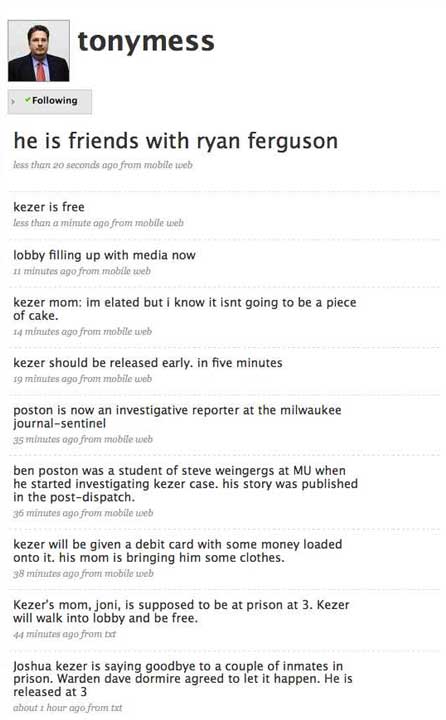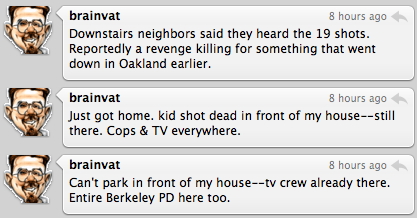Freshmen admitted into the University of Missouri School of Journalism (and pre-jounalsim students) will be “required” to have an iPhone or ilPod Touch beginning this fall. But not really. If the device is “required” it can be included in a financial need estimate.
According to the story in the Columbia Missourian, iPods and iPhones are “learning devices” used to record lectures. But student still have the option of using their laptops to record lectures.
People have already started bitching about this. Favoring one brand of computer or device; scamming the financial needs program, etc.
When I saw @georgekopp ‘s tweet on this, I thought it was a good idea but for a reason not mentioned in the story.
News is going (has gone?) mobile. A journalism student can’t begin to understand –and report on– that world without a moblie device and –for the moment– the iPhone and iPod Touch are the of breed. I can’t believe the J-school didn’t make that point.
It would be like coming to photography school without a camera.
[A few hours later]
This is another one of those fantasy courses that are easy to come up with if you’ve never taught a class and have no expectation of doing so.
iPhone Reporting would come somewhere in the middle of j-school, rather than at beginning or end. Might work something like this:
Students are equipped with the new iPhone we’re all hoping will come out this summer. It does still images; audio and video (including editing apps). And that’s it. No laptops, digital cameras recorders… just the iPhone.
Each picks a story to cover for the entire semester. Or maybe they pick one from a hat. Either way.
Students are encouraged to use any and all platforms: YouTube, Twitter, flickr, Facebook, Twitpic, etc. The professor follows along online, offering feedback and suggestions during class time.
For all I know the MU J-School might already offer such a course. Perhaps it’s time for another visit with my old pal Mike McKean. Last time we spoke (almost 4 years ago?!) he had been tapped to head up the school’s new “convergence” program. Four Internet years is a lifetime.
PS: I now see he is in charge of the school’s Futures Lab. This implies there is more than one future. Very quantum.


